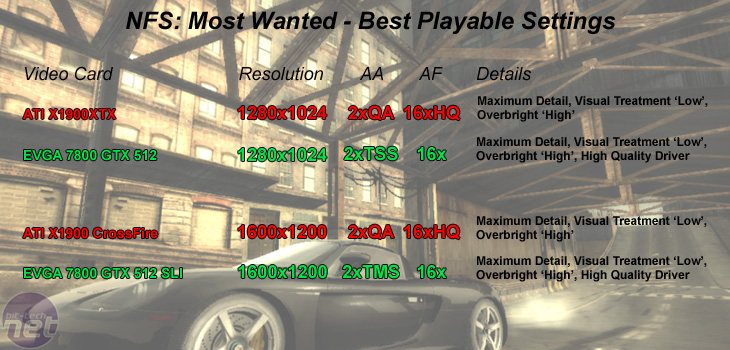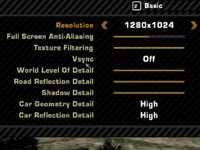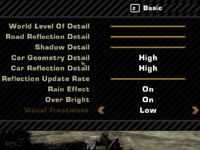Need For Speed: Most Wanted:
Publisher: Electronic ArtsWe used the full retail version of Need For Speed: Most Wanted - the latest addition to Electronic Arts' popular Need For Speed franchise. The game makes use of shaders everywhere, with realistic car reflections, a dynamic sky making use of HDR bloom and also weather patterns that change during the game. Most of the game takes place in the daytime, so aliasing is much more noticeable than it was in previous versions of the Need For Speed: Underground sub-franchise - antialiasing is preferred over a higher resolution in order to combat the edge aliasing.
There is a new setting called Visual Treatment which - when set to high - leaves a bright glow on most objects that get in the way of the sunlight. We feel this looks slightly unrealistic as the effect is over-used to an extent and it's best left set to the low setting with overbright enabled. Along with this, there's also the fact that the high setting causes a big performance drop, giving yet another arguement for leaving it on the lower setting.
We found that the best playable settings in this game were when the average frame rate was above 40 frames per second, while the minimum was above 25 frames per second and the majority of the frames were rendered above 30 fps.


EVGA's GeForce 7800 GTX 512 was slightly slower than the Radeon X1900XTX in NFS: Underground but the gaming experience was still very smooth. We were able to turn on high quality driver settings without too much of a performance drop, meaning that the texture filtering remained unoptimised meaning that there were no compromises made on the image quality front.
With the Radeon X1900 CrossFire, we were able to increase the resolution from 1280x1024 to 1600x1200 while keeping all other settings the same. On the flipside, we were able to increase the resolution on the EVGA GeForce 7800 GTX 512 SLI combination too, but we had to drop the transparency antialiasing quality down from supersampled to multisampled. Having said that, the image quality was still good.
The gameplay experience with Radeon X1900 CrossFire was smoother than the EVGA GeForce 7800 GTX 512 SLI, as the frame rate never dropped below 32 frames per second throughout our gameplay evaluation on the CrossFire configuration. The average frame rate was also considerably higher too - it could be an indication of things to come, as NFS: Most Wanted seems to be one of the most shader intensive games out there at the moment.

MSI MPG Velox 100R Chassis Review
October 14 2021 | 15:04









Want to comment? Please log in.